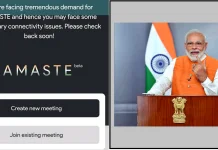So, red queen test is the test derived from Alice in Wonderland. But, before we explain the full context of that let’s talk about the company that is giving it at the moment: One97 Communications Ltd, the company that owns Paytm, reported a loss of Rs1,534 crore for the fiscal year 2016 (FY16), three times that of the previous year, according to a PTI report, citing regulatory filings. That year, founder Vijay Shekhar Sharma sold 1% of his stake in the company for a cool Rs325 crore, thus valuing it above Rs32,000 crore.
Paytm’s valuations have continued to rise exponentially since then. According to a Mint report, $10 billion is the value being pinned onto the e-payments company that now houses a payments bank and also has its fingers in the pie of e-commerce through an entity called Paytm Mall.
Much of it stems from the opaque e-commerce space where valuations are not based on current profits. It depends on how past funding snowballs into future funding and, ironically, how fast a company burns its investment to garner sales.

After all, the deep discounts given by companies rake up losses that not just wipe out revenue but erode capital as well. But it’s all part of the all-out effort to scale up and get the benefit of the network effect, so essential for online payment markets.
Paytm showers cash-backs hand over fist, much to the delight of its customers. The cashback became more intense after the government invalidated currency notes in November 2016. The company’s marketing blitzkrieg, armed with cashbacks, has made it the largest payment solutions provider in just under five years.
Sharma told Moneycontrol.com two weeks ago that despite all this, the company makes a profit at the transaction level.
Its entry into banking through Paytm Payments Bank will help to some extent. But the bank is said to have made a loss of Rs30.7 crore in FY17, according to another PTI report dated 3 October 2017. The bank began operations in May 2016. The other three payment banks also make losses. And payment banks are not its only competition.
The fact that Paytm is far ahead of rivals such as Mobikwik, Ola Money and PayUmoney should give some credence to the price tag it attracts. But they are not Paytm’s real competition either.
Perhaps the closest rival could be Flipkart. Predominantly an e-commerce firm, Flipkart entered the payment space recently while Paytm is a payments platform that has entered into the e-commerce space through Paytm Mall. Flipkart is currently valued at $12.6 billion. Global bigwigs like Google and Amazon have also entered the crowded payment space in India.
Competition is heating up as e-commerce giants begin selling financial products off their shelves and existing banks begin to tie up with offline retailers to offer juicy deals.
Paytm’s challenge is to stay not just relevant but attractive in a market where every contender is expanding its umbrella of offers. And this goes beyond claims of customer base growth. Only then can it make steep valuations stick.
As the Red Queen told Alice in Through the Looking Glass:
Now, here, you see, it takes all the running you can do, to keep in the same place. If you want to get somewhere else, you must run at least twice as fast as that!









